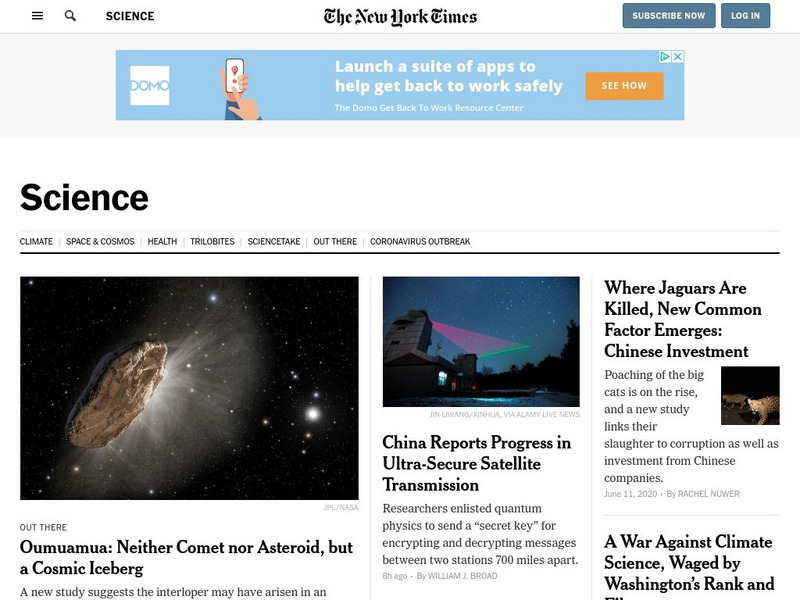Hi, what do you want to do?
Channel Islands Film
Island Rotation: Lesson Plan 3
How far have California's Channel islands moved? What was the rate of this movement? Class members first examine data that shows the age of the Hawaiian island chain and the average speed of the Pacific Plate. They then watch West...
Curated OER
It's About Time
Students create their own timeline. In this social science lesson, students write the important events that happened in their lives on their timeline and then compare their timeline to Earth's timeline.
Channel Islands Film
Arlington Springs Man: Lesson Plan 2
West of the West's documentary Arlington Springs Man and a two-page scientific article about the same topic provide the text for a reading comprehension exercise that asks individuals to craft a one page summary of information gathered...
Curated OER
Fossils: The Eras of the Earth's History
Young scholars research the four geologic eras of Earth's history. In this extension on a fossils lesson, students research the different eras of Earth's history. Young scholars use AppleWorks to create a bar graph containing information...
Curated OER
White Glue Fossils: Casts, Molds, and Impressions
Students make impressions and molds in clay and them make casts with glue. After the glue dries students remove their fossils.
Curated OER
Geology of Connecticut
Learners examine the geology of Connecticut, including plate tectonics, glaciation, and fossil formation.
After reviewing past lessons, they write essays about what life may have been like in the Mesozoic Period. Following a field...
Curated OER
Corridor of Time Fieldtrip Worksheet and Explorers Heritage Center History Hunt
In this Corridor of Time and Explorers Heritage Center worksheet, students respond to 29 short answer and fill in the blank questions regarding information presented in the North Dakota Heritage Center.
Curated OER
The Fossil Record
Learners research about the animals found in Burgess Shale. In this earth science lesson, students evaluate the significance of fossils in human history. They create models of their chosen animal.
Curated OER
You Say You Want an Evolution?
Young scholars estimate the number of living organisms they might find in their local environment. After researching the types of organisms that existed during various geologic time periods, students describe how life forms have changed...
Curated OER
The Delicate Balance - Iowa's Natural Resources
Discover the natural resources in Iowa by studying it's history. In this environmental instructional activity, your students will observe a topographical map of Iowa and identify where its most valuable resources are. They complete an...
Curated OER
Digging Into Science: Final Analysis
For this archeological excavation worksheet, students complete 9 short answer questions based on a simulated archeological activity they performed in a small group.
Curated OER
The Gifts of the Nile
Get your class thinking about the geography that shaped the Egyptian landscape and culture. They compare ancient climate zones and geogrpahical fetures, locate evidence of plate tectonics, take and quiz, and write a short essay. The...
Curated OER
Law of Superposition
Students identify the law of superposition and it states that beds of rock in a series are laid down with the oldest at the bottom and younger layers on the top. They construct a legen for a block diagram and construct a block diagram...
Curated OER
The End of an Era
Students explore the American-Mongolian paleontology expedition of Cretaceous fossil beds at Ukhaa Tolgod in the Gobi Desert. They present information about the life forms, tectonics, climate and geology of this time.
Curated OER
Natural Hazards
Young scholars evaluate the hazards of naturally occurring events. After watching a video concerning safety hazards, students work in groups to discuss the safety issues involved in taking a trip to a mountainous region. ...
New York Times
New York Times: Science
[Free Registration/Login Required] The New York Times maintains daily coverage of the latest in environmental news, including geology, global warming, wildlife and earthquakes.





















